-
-
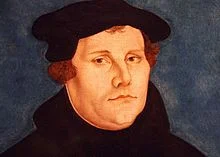 The Ninety-Five Theses, written by Martin Luther (german Monk) in 1517, were a list of propositions challenging the practices of the Catholic Church, particularly the sale of indulgences.
The Ninety-Five Theses, written by Martin Luther (german Monk) in 1517, were a list of propositions challenging the practices of the Catholic Church, particularly the sale of indulgences. -
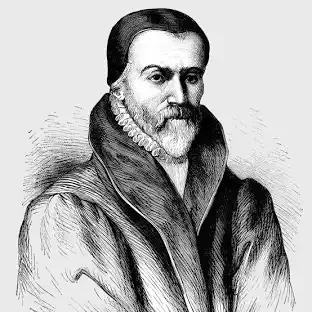 William Tyndale translated the New Testament into english.
William Tyndale translated the New Testament into english. -
 Henry VIII asked for his marriage with Catherine of Arragon to be annulled for various reasons (she failed to bear a son, supported of the Habsburgs and Henry was in love with Anne Boleyn, Catherine's lady in waiting) but the Pope rejected the petition.
Henry VIII asked for his marriage with Catherine of Arragon to be annulled for various reasons (she failed to bear a son, supported of the Habsburgs and Henry was in love with Anne Boleyn, Catherine's lady in waiting) but the Pope rejected the petition. -
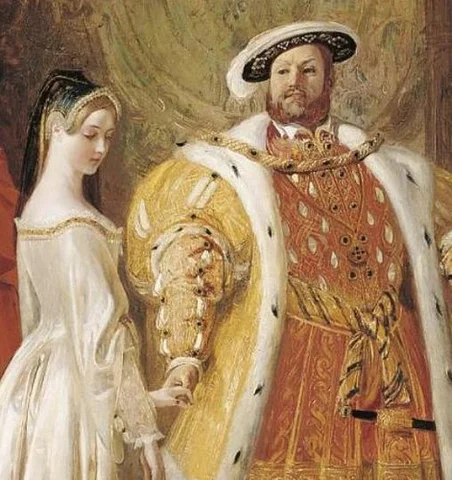 The Act in Restraint of Appeals gave the King legal power to annul the marriage
The Act in Restraint of Appeals gave the King legal power to annul the marriage -
 The Act of Supremacy was a major law that passed in 1534 during the reign of King Henry VIII. It declared the king as the "Supreme Head of the Church of England" and therefore completly supressed the Pope's authority.
The Act of Supremacy was a major law that passed in 1534 during the reign of King Henry VIII. It declared the king as the "Supreme Head of the Church of England" and therefore completly supressed the Pope's authority. -
Rebellions against the dissolution of the monasteries, the church reformation, they wanted the restoration of the Pope and of Mary Tudor
-
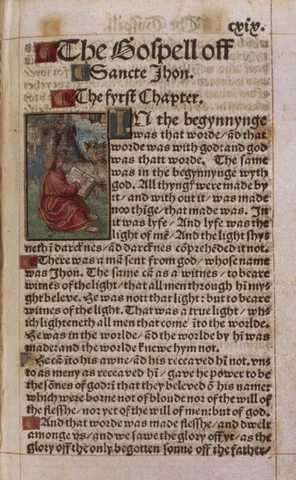 Before this, English translations were forbidden by the Church, which maintained Latin as the official language for scripture. This law gave everyone the access to the bible's content and had an impact on the writing and reading skills of the british population.
Before this, English translations were forbidden by the Church, which maintained Latin as the official language for scripture. This law gave everyone the access to the bible's content and had an impact on the writing and reading skills of the british population. -
-
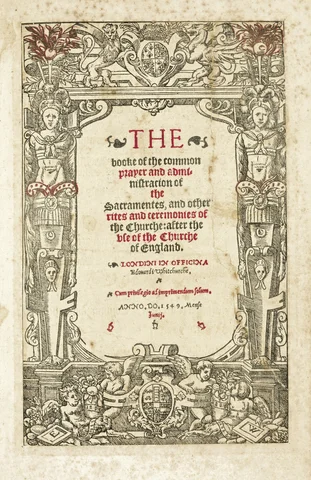 The Book of Common Prayer is a foundational text for the Anglican Church. It was first published in 1549 during the English Reformation.
The Book of Common Prayer is a foundational text for the Anglican Church. It was first published in 1549 during the English Reformation. -
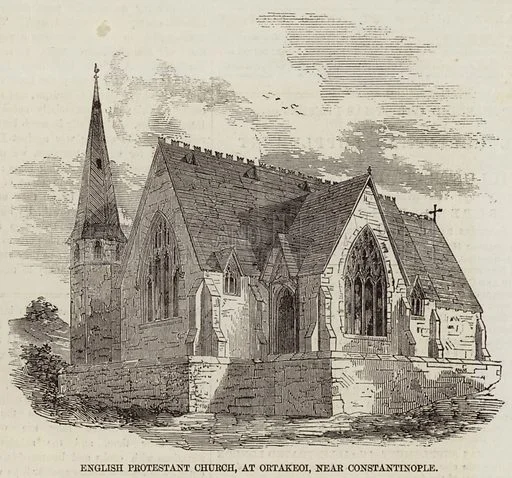 There are protestants churches in Germany, Scandinavia and the Netherlands
There are protestants churches in Germany, Scandinavia and the Netherlands -
-
Over 200 protestants were burnt alive or forced to leave the country and fled to the Continent
-
-
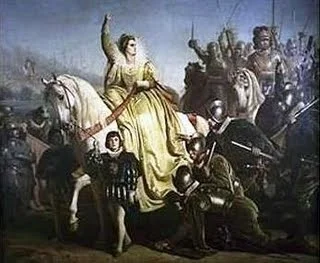 In this speech, she addressed the challenges she would face as a woman ruler and emphasized her commitment to her people. She dismisses the fact that she is a “weak” woman by saying she has "the heart and stomach of a king".
In this speech, she addressed the challenges she would face as a woman ruler and emphasized her commitment to her people. She dismisses the fact that she is a “weak” woman by saying she has "the heart and stomach of a king". -
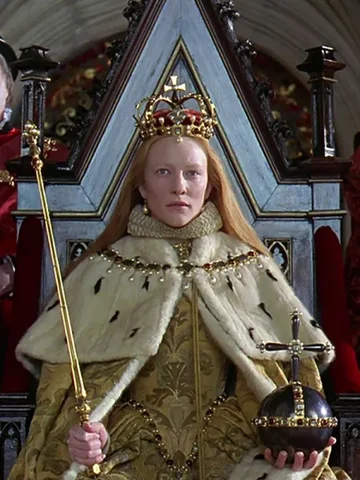 Elizabeth I's coronation took place on January 15, 1559, at Westminster Abbey in London, a few months after Mary Tudor's death. Her goal as new Queen was to return to protestantism, stabilize the Anglican Church and extend England's influence.
Elizabeth I's coronation took place on January 15, 1559, at Westminster Abbey in London, a few months after Mary Tudor's death. Her goal as new Queen was to return to protestantism, stabilize the Anglican Church and extend England's influence. -
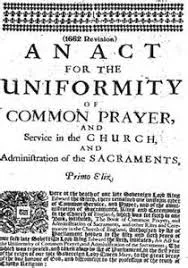 This act declared that every parish had to use the Book of Common Prayer and the people who did not attend an Anglican services on Sundays and holy days were fined.
This act declared that every parish had to use the Book of Common Prayer and the people who did not attend an Anglican services on Sundays and holy days were fined. -
 This act followed the original Act of Supremacy of 1534, which had established King Henry VIII as the Supreme Head of the Church, breaking away from the authority of the Pope. Elizabeth's version declared her as "Supreme Governor" of the Church (anglican church).
This act followed the original Act of Supremacy of 1534, which had established King Henry VIII as the Supreme Head of the Church, breaking away from the authority of the Pope. Elizabeth's version declared her as "Supreme Governor" of the Church (anglican church). -
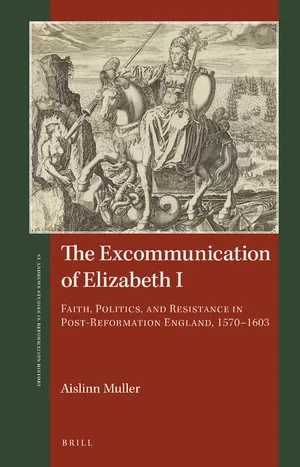 The Pope Pius V declared Elizabeth a heretic and excommunicated her from the Catholic Church. He also released her subjects from any allegiance to her, urging them to disobey and even kill her.
The Pope Pius V declared Elizabeth a heretic and excommunicated her from the Catholic Church. He also released her subjects from any allegiance to her, urging them to disobey and even kill her. -
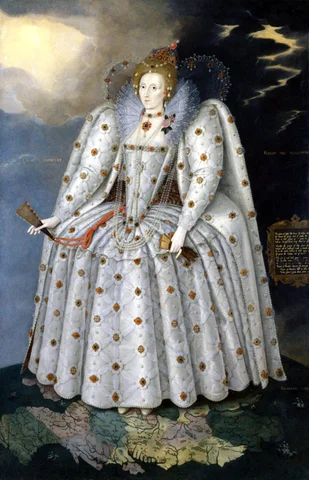 Strict guidelines were introduced for royal portraits to promote Elizabeth as an eternal, divine monarch. This contributed to the "Golden Age" myth of Elizabeth's reign, symbolizing stability, exploration, and cultural flourishing.
Strict guidelines were introduced for royal portraits to promote Elizabeth as an eternal, divine monarch. This contributed to the "Golden Age" myth of Elizabeth's reign, symbolizing stability, exploration, and cultural flourishing. -
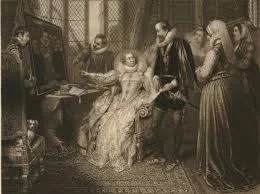 Major Catholic conspiracy to assassinate Queen Elizabeth I and replace her with Mary, Queen of Scots, who was seen by many Catholics as the legitimate ruler of England.
Major Catholic conspiracy to assassinate Queen Elizabeth I and replace her with Mary, Queen of Scots, who was seen by many Catholics as the legitimate ruler of England. -
 After being held prisonner in England for 19 years, Mary was accused of being involved in a plot to assassinate Elizabeth and take the English throne. Despite her claims of innocence she was found guilty of treason. On the day of her execution, Mary dressed in a red gown (the colour of catholic martyrs).
After being held prisonner in England for 19 years, Mary was accused of being involved in a plot to assassinate Elizabeth and take the English throne. Despite her claims of innocence she was found guilty of treason. On the day of her execution, Mary dressed in a red gown (the colour of catholic martyrs). -
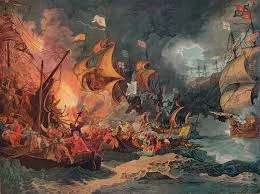 Philip II, King of Spain, launched a massive naval invasion to overthrow Elizabeth, but it was defeated by the English navy. This victory reinforced Elizabeth’s image as a strong ruler and secured Protestant dominance.
Philip II, King of Spain, launched a massive naval invasion to overthrow Elizabeth, but it was defeated by the English navy. This victory reinforced Elizabeth’s image as a strong ruler and secured Protestant dominance. -
 Elizabeth addressed her troops before the Spanish Armada's invasion, declaring her commitment to defend England. She demonstrated her political and rhetorical skills and used the two bodies theory to show her strength as both a queen and a military leader.
Elizabeth addressed her troops before the Spanish Armada's invasion, declaring her commitment to defend England. She demonstrated her political and rhetorical skills and used the two bodies theory to show her strength as both a queen and a military leader. -
-
 James VI of Scotland became James I of England, uniting the crowns of the two kingdoms. Despite the shared monarch, Scotland and England remained distinct political entities with separate laws, churches, and governments.
James VI of Scotland became James I of England, uniting the crowns of the two kingdoms. Despite the shared monarch, Scotland and England remained distinct political entities with separate laws, churches, and governments. -
 A Catholic conspiracy to assassinate James I and blow up Parliament was foiled. It highlighted the continuing threat of Catholic extremism in the post-Elizabethan era.
A Catholic conspiracy to assassinate James I and blow up Parliament was foiled. It highlighted the continuing threat of Catholic extremism in the post-Elizabethan era. -
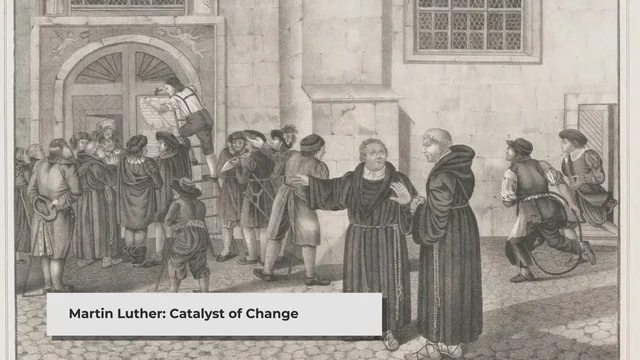 Proposed agreement between King James I and Parliament to resolve royal financial issues.The House of Commons refused to vote in favour and James dismissed the Parliament.
Proposed agreement between King James I and Parliament to resolve royal financial issues.The House of Commons refused to vote in favour and James dismissed the Parliament. -
-
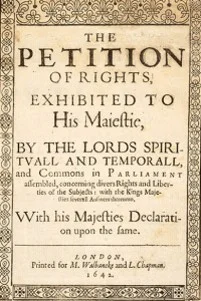 Constitutional document presented to King Charles I by Parliament. They requested the King to recognise the illegality of his acts. They asked for : no taxation without Parliament's consent, no imprisonment without due cause, no forced billeting of soldiers in private homes, no use of martial law in peacetime.
Constitutional document presented to King Charles I by Parliament. They requested the King to recognise the illegality of his acts. They asked for : no taxation without Parliament's consent, no imprisonment without due cause, no forced billeting of soldiers in private homes, no use of martial law in peacetime. -
Charles I imprisoned the members of Parliament and declared there would be no more Parliament. He then on would rule "alone".
-
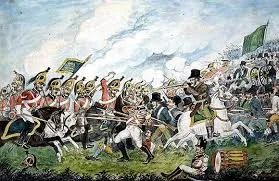 Irish Catholics rebelled against Protestant settlers. Reports of massacres fueled anti-Catholic sentiment in England, worsening the tensions between Charles I and Parliament over the control of the army.
Irish Catholics rebelled against Protestant settlers. Reports of massacres fueled anti-Catholic sentiment in England, worsening the tensions between Charles I and Parliament over the control of the army. -
 Charles entered the House of Commons with troops to arrest five MPs. This violation of parliamentary privilege was a turning point, prompting his flight to York and the formal start of the Civil War on August 22, 1642.
Charles entered the House of Commons with troops to arrest five MPs. This violation of parliamentary privilege was a turning point, prompting his flight to York and the formal start of the Civil War on August 22, 1642. -
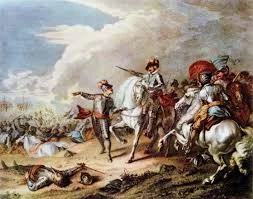 Turning point in the First Civil War.
Turning point in the First Civil War. -
Governed by Oliver Cromwell as Lord Protector (1653–1658) and briefly by his son Richard Cromwell.
-
 Charles I was tried for high treason by the Rump Parliament and executed on January 30, 1649. The monarchy was abolished, and England was declared a Commonwealth.
Charles I was tried for high treason by the Rump Parliament and executed on January 30, 1649. The monarchy was abolished, and England was declared a Commonwealth. -
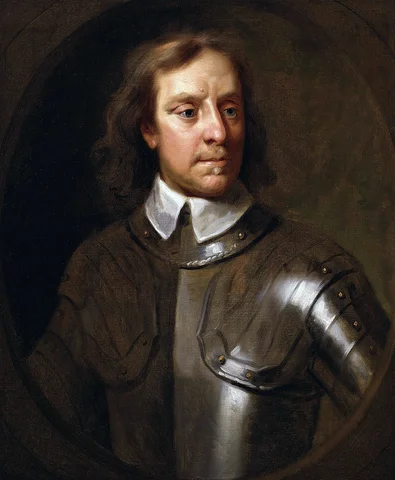 Oliver Cromwell became Lord Protector, ruling as a de facto dictator. The Protectorate centralized power but faced opposition from both royalists and radicals. Similar to a monarchy without a King
Oliver Cromwell became Lord Protector, ruling as a de facto dictator. The Protectorate centralized power but faced opposition from both royalists and radicals. Similar to a monarchy without a King -
Restored to the throne in 1660.
-
-
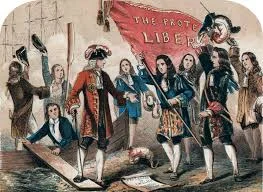 James II fled to France as William of Orange was invited to take the throne. This bloodless transfer of power secured Protestant succession and reinforced parliamentary sovereignty.
James II fled to France as William of Orange was invited to take the throne. This bloodless transfer of power secured Protestant succession and reinforced parliamentary sovereignty. -
 This document formalized limits on royal power and strengthened Parliament’s authority, laying the groundwork for constitutional monarchy.
This document formalized limits on royal power and strengthened Parliament’s authority, laying the groundwork for constitutional monarchy. -
Began after the Glorious Revolution in 1688
-
Oversaw the 1707 Act of Union, creating Great Britain.
-
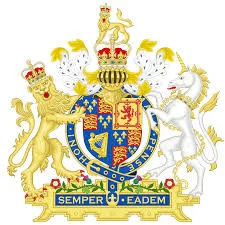 England and Scotland united into the Kingdom of Great Britain, creating a single political entity while preserving distinct legal and religious institutions.
England and Scotland united into the Kingdom of Great Britain, creating a single political entity while preserving distinct legal and religious institutions. -
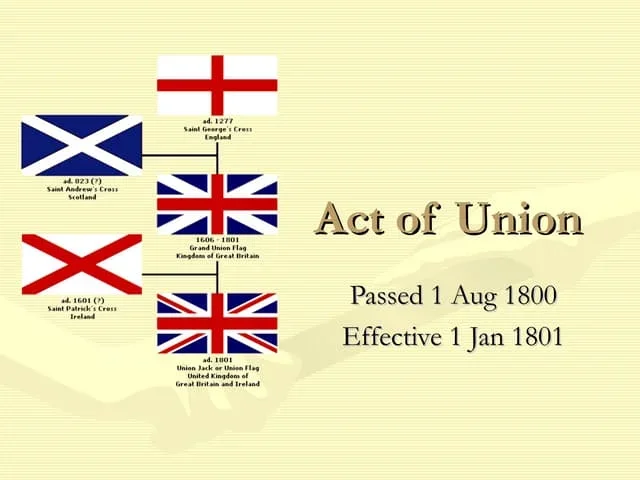 This legislation merged the Kingdom of Great Britain and the Kingdom of Ireland into a single political entity. The union lasted until 1922.
This legislation merged the Kingdom of Great Britain and the Kingdom of Ireland into a single political entity. The union lasted until 1922.
